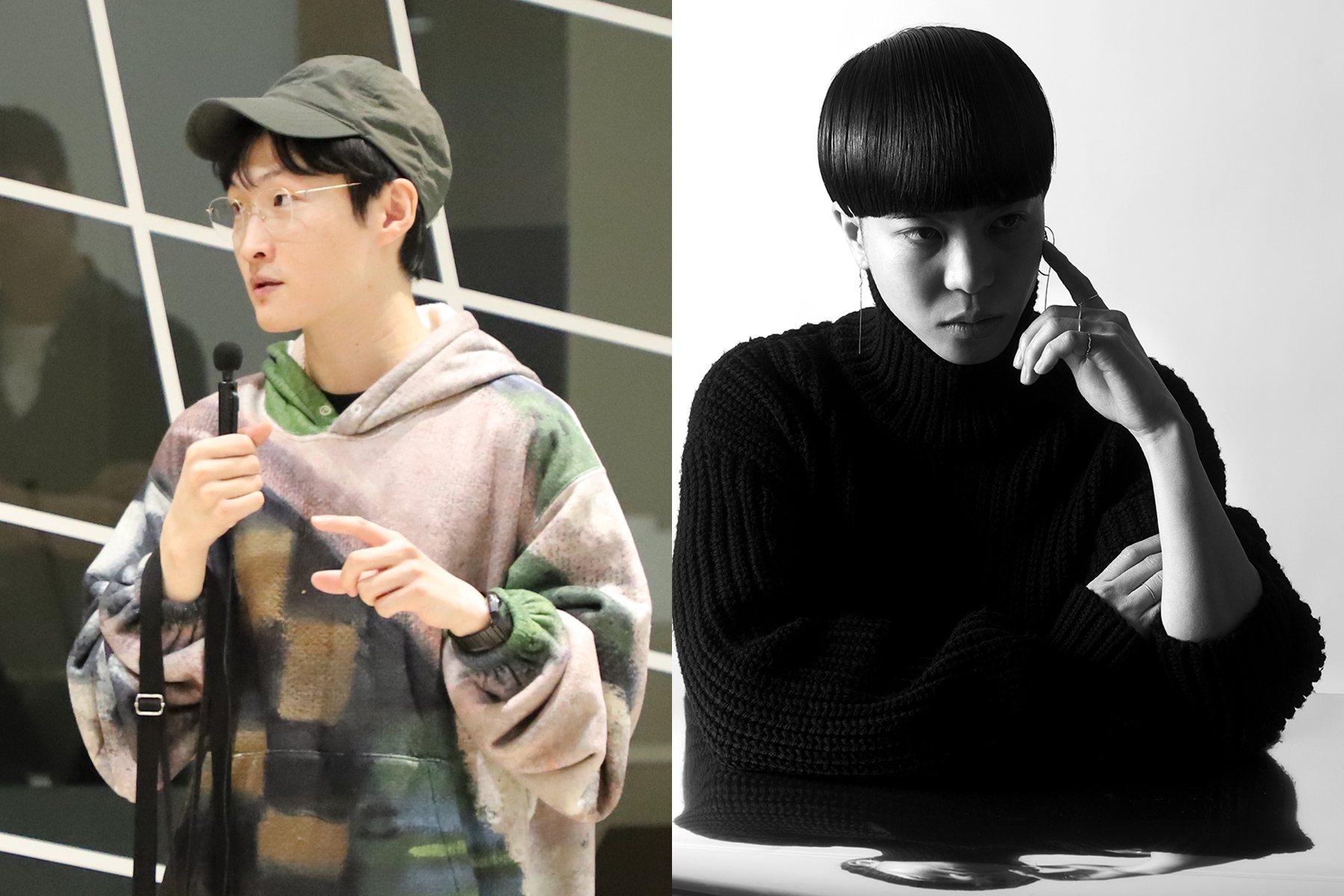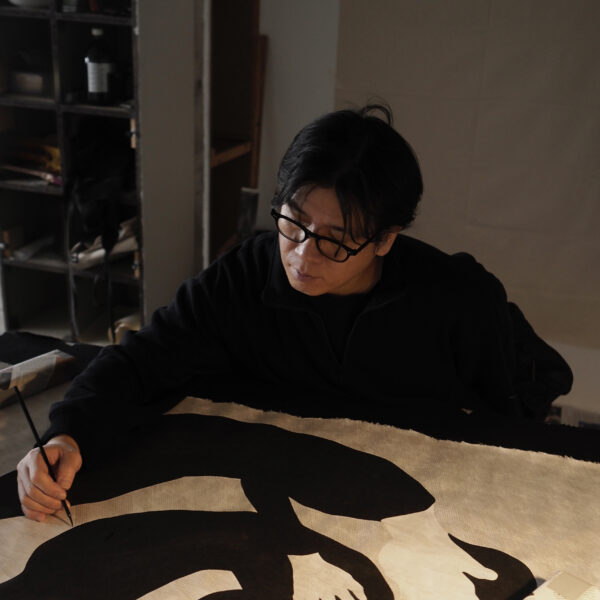리버스 캐비닛
2025. 9. 3 – 9. 7 | [INTERVIEW] Reverse Cabinet
Curator Interview 윤율리 (윤), 토모야 이와타 (토)

Kiaf SEOUL 2025 특별전 《리버스 캐비닛》의 공동 큐레이터 – 윤율리 (좌측), 토모야 이와타 (우측)
레오나르도 다빈치의 ‘최후의 만찬’, 렘브란트의 ‘야경’은 수집가의 요청에 의해 탄생했다. 좋은 예술을 알아보고, 작가의 발전을 도우며, 창작 기반을 제공하는 ‘컬렉팅’이 예술 세계를 지탱하는 가장 중요한 축 중 하나라는 증거다. 이번 Kiaf SEOUL 2025 특별전을 기획한 윤율리 일민미술관 학예실장이 전시의 핵심 주제로 ‘수집’을 선정한 건 이런 중요성에 주목해서다. 윤율리와 공동 기획자인 토모야 이와타에게 전시 기획 의도와 눈여겨볼 특징에 대해 물었다.
▷수집은 왜 중요한가요. 전시 취지를 설명해주십시오.
(윤) “미술사는 수집의 역사라고 할 수 있습니다. 전시는 그것을 진열하는 형식입니다. 그래서 수집과 진열은 단순히 부와 이념을 과시하는 유희가 아니라 동시대 미술의 가늠자 역할을 합니다. 이는 우리가 살아가는 세상의 규칙과 질서를 만들고 역사를 다시 정의하게 됩니다.”
(토)“역사는 수집된 기억의 파편들을 해석하는 과정을 통해 끊임없이 재구성됩니다. 이번 전시에서 ‘수집’이라는 관점을 통해 한국과 일본 간의 역사적 관계, 그리고 여전히 남아있는 마찰을 다시 살펴볼 수 있는 개념적 틀을 제시하려고 했습니다.”
▷전시 제목인 《리버스 캐비닛》은 어떤 의미인가요?
(윤)“‘캐비닛’은 근대 박물관의 시작이 된 ‘호기심의 방(Cabinet of Curiosities)’에서 가져온 말입니다. 옛 수집가들은 이 방에 온갖 기이한 물건들을 채워 넣으며 자신의 권력을 과시했죠. 이번 전시에 참여하는 작가들은 바로 이 캐비닛의 논리를 ‘뒤집는(Reverse)’ 작업을 보여줍니다. 사물을 영원히 보존하려는 욕망을 비틀고, 수집된 사물에 담긴 상처와 기억을 드러내며, 때로는 디지털 데이터처럼 형태 없는 것을 수집하기도 합니다.”
(토) “누구나 어릴 적 자신만의 ‘보물’을 모아본 경험이 있습니다. 그만큼 수집은 원초적인 행위입니다. 이번 전시에서는 그 익숙한 행위를 뒤집어(Reverse), 수집된 물건 자체보다 ‘수집하는 행위’와 그 안에 담긴 개인의 시선을 들여다보려고 했습니다.”
▷한일 작가 6인을 선정한 기준이 궁금합니다.
(윤)“여섯 작가 모두 ‘수집’이라는 행위를 각자의 방법론으로 사용한다는 공통점이 있습니다. 돈선필과 정금형 작가는 ‘수집가’로서의 정체성을 명확히 드러내고, 염지혜 작가는 영상 작업을 위해 역사적 데이터를 수집합니다. 오가영 작가는 이미지뿐만 아니라 이미지를 담는 매체 형식 자체를 수집하고 진열합니다.
(토) “양국의 역사적 배경과 그로 인한 긴장 관계를 외면하지 않고, 이를 작업의 중요한 동력으로 삼는 작가들을 주목했습니다. 다케무라 케이 작가는 훼손된 사물을 비단실로 꿰매며 기억과 역사를 복원하고, 다카하시 센 작가는 ‘부패하는 컬렉션’을 통해 소멸의 문제를 정면으로 다룹니다. 이들의 작업은 과거의 상처를 애도하고, 그 기억을 어떻게 현재로 가져올 것인지 고민하게 합니다.”
▷아트페어라는 상업 공간에서 전시가 열리는 점도 흥미롭습니다.
(윤)“솔직히 전시만을 위해 최적화된 공간은 아니기에 어려움도 있습니다. 하지만 Kiaf가 가진 역동성이 그 제약을 보완해준다고 생각해요. 이 전시가 일반적인 갤러리나 미술관, 개인의 컬렉션과는 ‘어긋난’ 전시처럼 보인다면, Kiaf의 특별전으로서 더 미묘한 매력을 전달할 수 있을 거라 기대합니다.”
(토)“아트페어는 작품을 ‘소유’하는 일이 중심입니다. 그렇기 때문에 오히려 ‘소유란 무엇인가?’라는 근본적인 질문을 던지기 더 좋은 장소입니다. 작품을 산다는 것은 단순히 물건을 갖는 것을 넘어, 그 작품을 보존하고 관리하며 다음 세대에 물려줄 것인지까지 고민하는, 일종의 ‘책임’을 지는 행위입니다. 북적이는 페어 현장에서 잠시 벗어나 작품을 소유하고 수집하는 것의 진짜 의미에 대해 한번쯤 생각해보는 경험이 되길 바랍니다.”
[INTERVIEW] Reverse Cabinet
- Dates
- 2025. 9. 3 – 9. 7











